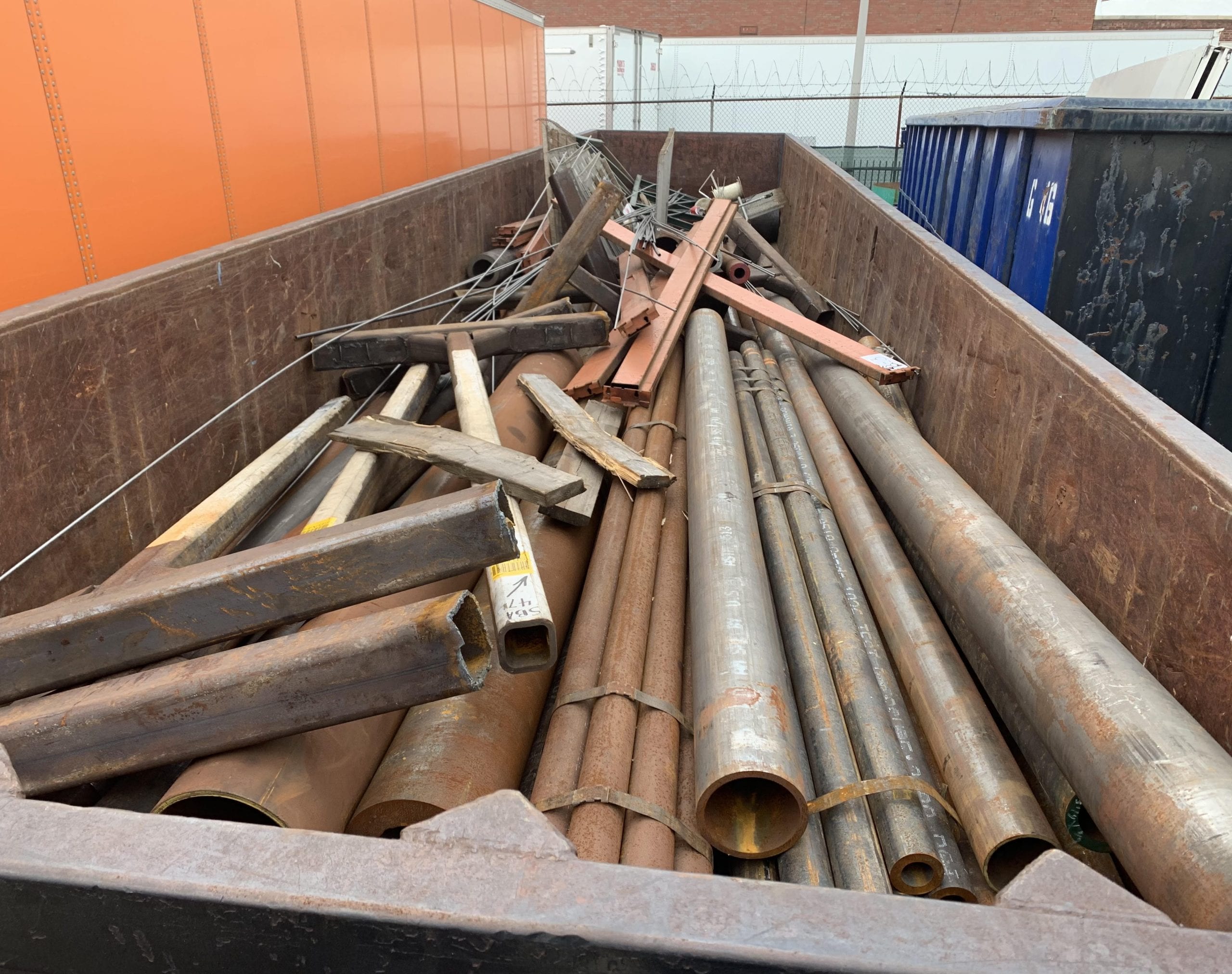It’s important to understand the difference between ferrous and non-ferrous metals. It will help you optimize your recycling processes and identify which materials have the most value. By separating the metal types, you can get paid more for the same load.
We’ll explain all you need to know about ferrous vs. non-ferrous metals.
What is Ferrous Metal?
Ferrous metal is any alloy or metal that contains a significant amount of iron. This is easy to remember if you’re familiar with the periodic table of elements, where iron is represented by Fe.
As we all know, iron is strong. So, ferrous metals are used mainly for their strength. They are essential in manufacturing and construction, where strong parts lead to strong structures, like bridges and skyscrapers.
How to Tell if a Metal is Ferrous
It’s very easy to tell if a metal is ferrous if you have a magnet. If the magnet sticks, it’s ferrous. That’s because iron is magnetic, and as we just learned, iron is what makes a metal ferrous.
There is a way you can eyeball it, too. Despite its strength, iron is vulnerable to rust and corrosion. So, if the metal is rusty and corroding, it’s most likely ferrous.
Recyclable Ferrous Metals Examples
Ferrous metals are the most recycled material. Any metal with enough iron is considered ferrous, but here are the ferrous metals examples that are recycled most often.
- Carbon steel (low, medium, and high)
- Stainless steel
- #1 & #2 Heavy Melt
- Busheling
- Plate & structural
- Unprepared plate
- Clips
- Cast iron
- Steel dies
- Forgings
- Rail
- Turnings
- Coils
What is Non-Ferrous Metal?
If we remember our periodic table (Fe=iron), Non-ferrous means non-iron. So, non-ferrous metal does not contain a significant amount of iron.
Non-ferrous metal is not as strong as ferrous metal, but it does have many valuable qualities. For one, it is pliable. And unlike ferrous metal, it is rust- and corrosion-resistant. Another key feature is that it is not conductive, which makes it ideal for wiring and electronics.
How to Tell if Metal is Non-Ferrous
Just like with ferrous metal, it’s easy to identify non-ferrous metal with a magnet. If the metal is not magnetic, then it is non-ferrous.
When comparing ferrous vs. non-ferrous metals, non-ferrous metals are usually shinier. That’s because they do not rust and corrode like their iron counterpart.
You can also do the pliability test depending on the thickness of the material. If you can dent or bend the metal, it is more likely non-ferrous metal. However, there are lots of variables that can affect that, so it’s just a general identifier.
Recyclable Non-Ferrous Metals Examples
Non-ferrous metals are worth more to recycle because they are rarer. Another big plus is non-ferrous metals do not lose their chemical properties when recycled. That means they can be recycled over and over again!
Non-ferrous metals examples that are commonly recycled:
- Aluminum
- Lead
- Copper
- Zinc
- Tin
- Brass
- Nickel Alloy
- Insulated wire
Industrial Metal Recycling, Chicago
Whether you’re recycling ferrous vs. non-ferrous metal, Greenway Metal Recycling can help. We are the go-to recycling center for commercial and industrial companies. Contact us today for a free quote and free scrap audit.
Read Next: What is Prepared Scrap Metal?

